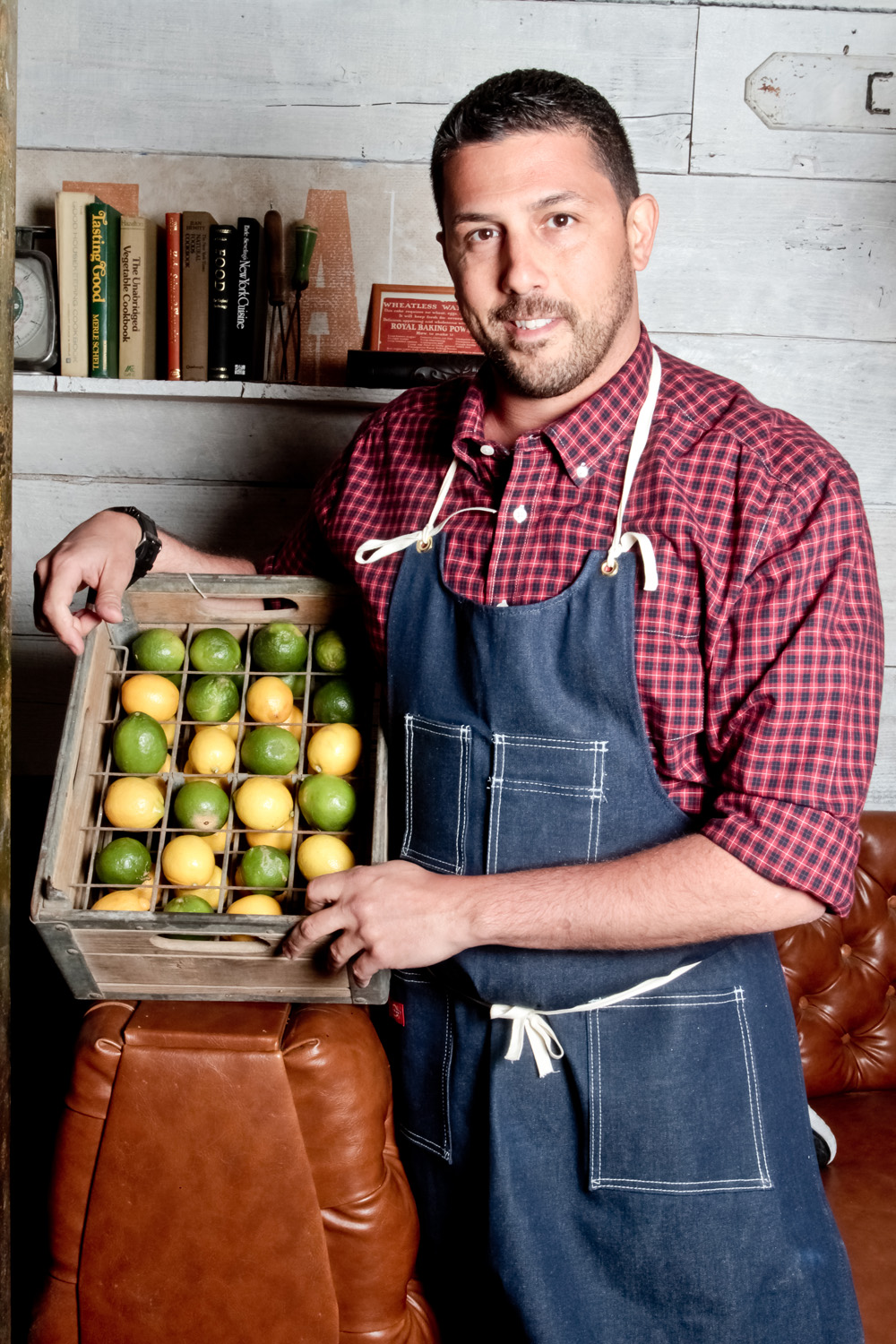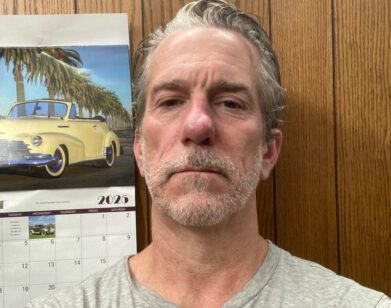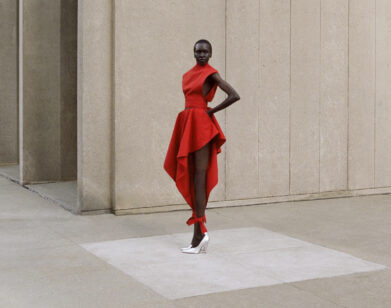Chef Joe Isidori’s Market Economics
“I’m not a bog-yourself-down, meat-and-potatoes kind of chef,” Joe Isidori proclaims, sitting in front of the fireplace at the downstairs bar, the Handy Liquor Bar, of his new restaurant, Chalk Point Kitchen, due to open in early April in the Broome Street space formerly occupied by The Dalloway. “I like seasonal, fresh, light,” he continues. “Sometimes it’s better not to cook something, and to make a refreshing crudo or salad out of it.”
Chef Isidori’s ethos, equally playful and soulful, pervades the airy, haute-farmhouse aesthetic (designed by architect Chien Dao, of The Lion, The Crown, Delicatessen, and others) at Chalk Point, from the moment a diner walks in and sees the line of fresh herbs growing under grow lamps just inside the front door. And though Michelin-starred Chef Isidori, who came up through the Trump International properties, Southfork Kitchen in Bridgehampton, and Arthur on Smith in Brooklyn, prides himself on putting unconventional, “edgy” spins on familiar proteins, don’t mistake him for a molecular gastronomist. “I don’t want to pore over it and be a mad scientist,” he says. “When people eat my food, they feel like someone’s in the kitchen who understands what they’re doing, and who’s doing it with heart, as opposed to someone who’s trying to adulterate or manipulate a pea 12 ways on a plate.”
ALEXANDRIA SYMONDS: So how does [restaurateur] Matt [Levine], as a boss, compare to Donald Trump? [laughs]
JOE ISIDORI: [laughs] Well, it’s a little different. Matt and I are partners, and Donald was… a boss. Matt and I have equal vision, you know, we share a vision. We need each other to make it work. And that’s a great thing. Because what I do, he doesn’t, and what he does, I don’t, so it’s really a great marriage. There’s such a dynamic to this business. Back in the day it used to be the old adage, “Build it and they will come,” kind of a deal, talent reigns overall, but it’s more than just one talent these days. People used to come strictly for the chef. I don’t think that’s the case anymore. People come for an experience, and in order to make an experience you have to have a great moxie, or a great team of individuals and leaders to make that happen.
SYMONDS: When did you initially meet?
ISIDORI: Somewhere in July, August.
SYMONDS: That’s so fast.
ISIDORI: So we met each other, we got to know each other over the summer, and then around November we said “Hey, let’s do this.” We started the project November 15th.
SYMONDS: Had you come to The Dalloway before?
ISIDORI: Matt and I looked at the space when it was operating as The Dalloway. We had met each other, and he had this in mind, so we were still in our “getting to know each other” phase, but we went to see the space together and envisioned it together. Prior to that, I had been here when it was other spaces. One I remember off the top of my head was when Sam [Mason] was here with Tailor. I actually used to have a restaurant down the other side of the block, called Harbour, at the time, which was a quick and short stint, but I used to come over here and hang out.
SYMONDS: It seems like it’s a nice and unusual situation in that, like, for you to be successful doesn’t mean that The Dalloway failed. Cause they just moved somewhere else—
ISIDORI: Yeah, no not at all.
SYMONDS: It’s nice because it’s not like you’re moving into the shell of something.
ISIDORI: They were two young operators who realized that they needed a smaller venue to do what they do best. At the end of the day, this is more of a restaurant than a social club. So we are able to, with our expertise, come in here off the heels of somebody who did something great, and we’ve created this cool vibe downstairs, and then this jewel box of a restaurant upstairs.
SYMONDS: How much of the design element were you involved in?
ISIDORI: That was Chien Dao. He’s just an amazing guy and he’s really talented. I mean, The Lion, The Crown, Delicatessen… yadda, yadda, yadda. All of us have got huge resumes! [laughs] He really did it, and Matt was very hands-on with him as well. I designed the kitchen, so that was my baby. And it’s an awesome kitchen. We’ve got Basquiats on the ceiling. I called Matt up one day and was like, “You know, this open kitchen is so clean and white. We can really do something awesome.” And at first I was going to put some street art up there, we talked about Banksy, Warhol, bappa, bappa, bah, and then all of the sudden Basquiat hit us right in the head. Reason why is Basquiat has a painting of a chef, and on the chef coat it says Chef Joe.
SYMONDS: Oh really? I did not know that. That’s awesome!
ISIDORI: That’s how it all started. I’ll show it to you when we go upstairs. And then I was like, “I want to hang this up in the kitchen” and then Matt was like “Let’s just wallpaper the place with Basquiats!” I was like, “Great! Let’s do it.” And voilà.
SYMONDS: Having an open kitchen… The idea of people being able to watch me work is terrifying to me.
ISIDORI: I’d say 90 percent of the restaurants in my career have had open kitchens. I prefer it. Keeps us on our toes, allows me to really watch things. It’s like a captain of a ship who can see everything, and can see what’s going on in the dining room. We feed off of that vibe; that vibe feeds off of us. It creates this vibe that’s much more pleasurable, and also if you take it another route it’s comforting. I like seeing that the chef is confident enough to prepare his food right in front of me, not hiding anything.
SYMONDS: Sure!
ISIDORI: It also makes us work differently too. Whereas if you’re behind closed doors, nature of the beast is you’re going to become sloppier, because you’re going to sweep things under the rug, proverbially. In this case you’re not. Not that we ever would, but it really keeps it front of mind, and it makes us even more organized, and even better, and more confident and proud of what we’re doing. At the end of the day, this is a form of entertainment. My last partner is a writer, and his son directs and produces movies, and he’s done some off-Broadway plays. This was his first time doing a restaurant and he said to me, “This is very much like the film business.” We’re putting on a show here!
SYMONDS: I imagine it’s probably nice to get instant feedback, too.
ISIDORI: Sure. We’re instant gratification junkies in this place. Imagine, we work sometimes three days on a dish that you consume in three minutes.
SYMONDS: You’re making me feel guilty.
ISIDORI: It’s a masochist’s art form. It’s like a painter painting his masterpiece and burning it every time. We’re like a combination of a painter and an actor.
SYMONDS: Besides the herbs growing in the front of the space, how are you doing your sourcing?
ISIDORI: Ugh, I’m insane about sourcing.
SYMONDS: Nerd out.
ISIDORI: I mean, this concept is market-to-table. I don’t look at local the way other people look at local; I have a broader view of it. I’m a New York City kid. Born and raised running around these streets. My father—you heard the accent come out a bit, probably—my father was a chef, my grandmother was a chef. 1963 they had a restaurant on Times Square, 47th Street in the dining district, called The Villanova. My grandmother was reviewed in The New York Times in 1964.
SYMONDS: Wow.
ISIDORI: My recipes are 50 years in the making. So yeah, when we were kids, we did two things. We shopped in the markets for our food, and when we were off, my father used to close the restaurant on Tuesdays, we would go eat every ethnic food we could. going to downstairs restaurants in Chinatown, we’re going here for pierogies, we’re going to Japantown for yakitori; I was like eight years old doing this stuff.
SYMONDS: That’s an education.
ISIDORI: I learned how to weave my way in and out of markets, and I wasn’t scared of obscure products at a young age. As the world evolved, people started becoming more open-minded toward those things they would shy away from in Chinatown. Now they’re like, “Ooh I want to eat it.” So I call this market-to-table, because I’m taking all my experiences as a New Yorker, shopping, living, and eating in these markets and bringing it to the table, combined with 101 of farm-to-table, which, to me, is an overused term. You should be using local products, if you’re a chef; you should be working with the farmers. If you’re not, you’re a fool. So why promote it?
SYMONDS: So you think it’s a given?
ISIDORI: Yeah, why do I have to promote that? I’m a reputable enough chef that you should know I’m doing that anyway. So I take the Union Square Greenmarket and I combine it with the ethnic markets of New York City. I say it’s Chinatown-meets-Union Square Greenmarket. And create this food, that’s light, that’s fresh, that’s local, and has a really nice edge to it. I look at local a little bit differently. Local means neighborhood. I work with the neighborhood, I work with the farms, I protect the environment, and I keep it as close to home as possible. So my categories are seasonal, sustainable, local, organic. If it meets those categories, one if not multiple, I deem it suitable. So even when I get my cart and go to Chinatown, I go see all the little old ladies, and I buy a mixed bag of stir-fry greens—it’s still local. The greens might have been grown in Florida, but I have to support the local community. It’s not just about supporting the local farmer, it’s about supporting the local guy down the street who’s trying to feed his family.
SYMONDS: I wanted to ask a little bit about the historic element. Were you particularly interested in that?
ISIDORI: Always. I did it with Southfork, and I highlighted a lot of the fishermen, the baymen, the wine makers, the farmers of the east end of Long Island. So we started looking into the history of New York, and we found this area called Collect Pond, but the Dutch settlers came here and deemed it Chalk Point, because it was somewhat of a oyster shell depository. We looked into the whole history of oysters and how it was the staple cuisine of New York City for so long; that’s why I’m going to highlight oysters. I have oysters on the menu now, but I’m going to more and more. And old-school oysters: oysters on toast, oysters Rockefeller with this cool gruyere mornay and a little touch of toasted curry. And then I have Montauk Pearl oysters on the half shell with a little Japanese tadashi and salmon roe. Pearl Street was called Pearl Street because it glowed like a pearl, and it was paved with oysters. People would say, “Oh! The Streets of New York are paved with diamonds!” No, they’re paved with oyster shells, and that’s what’s glimmering. That’s what it came down to. So this whole area, all the way down to Chinatown, and dipping into TriBeCa and the Financial District, was all oyster shell, and called Chalk Point.
CHALK POINT KITCHEN IS LOCATED AT 527 BROOME STREET AND DUE TO OPEN IN EARLY APRIL.







